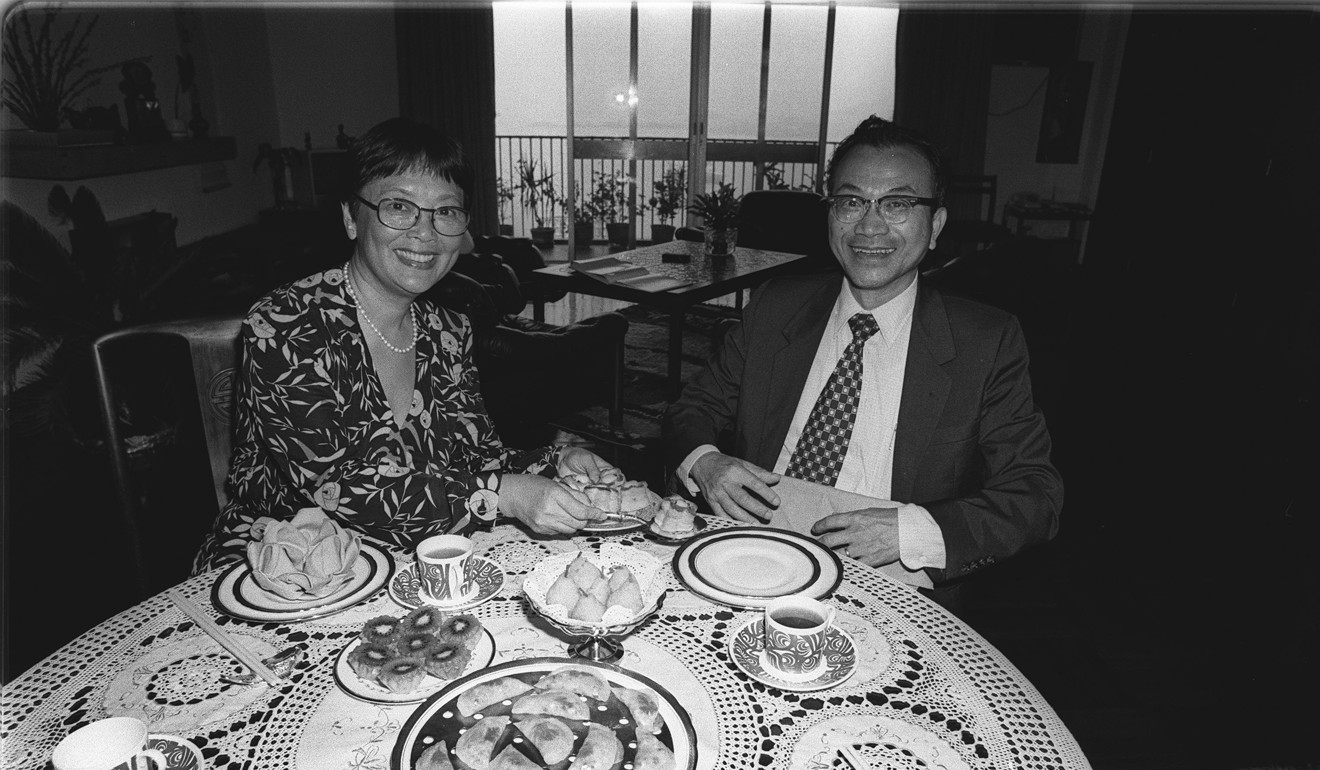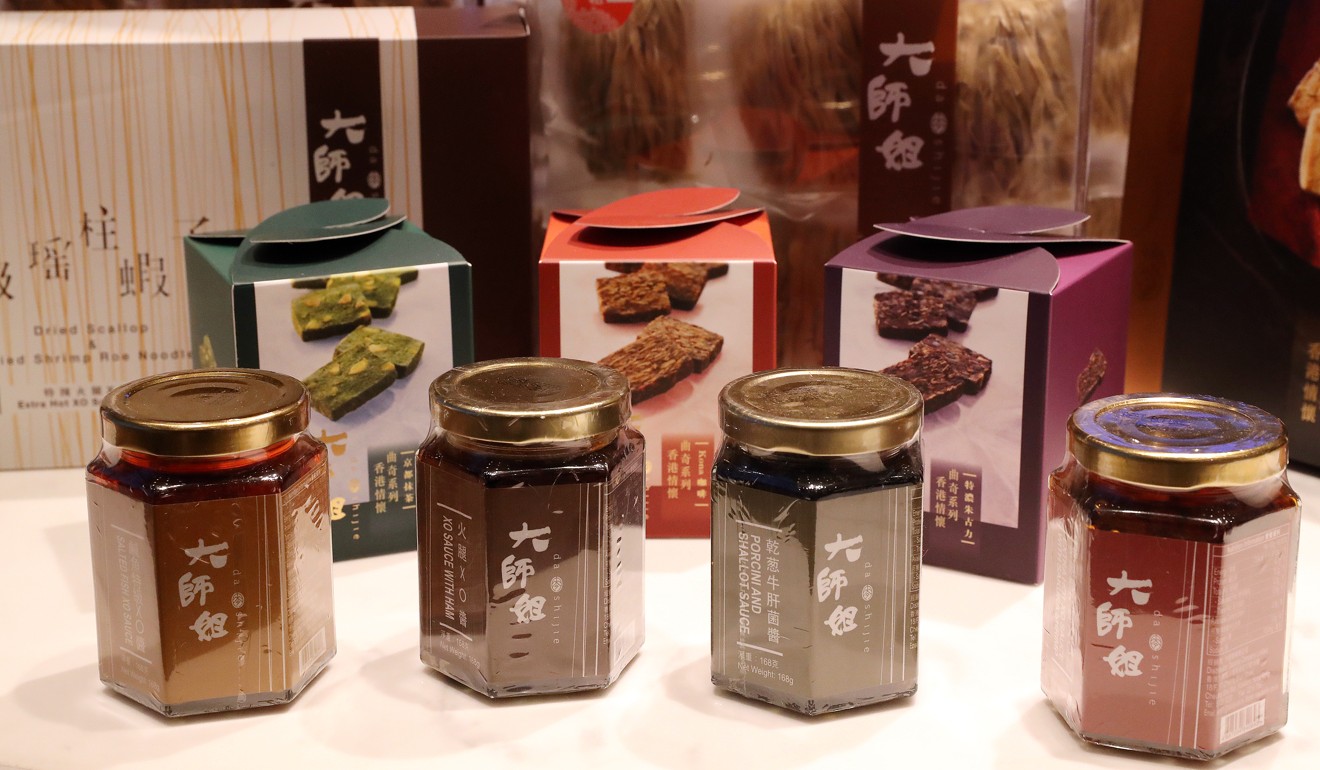
Why Chinese New Year puddings by Hong Kong brand Dashijie are so popular - mind you, making them is no piece of cake
- Founder Theresa Yiu, who first tasted success with her Lunar New Year offerings in 2010, reveals what she learned from ‘ruthless’ Cantonese cuisine legend Pearl Kong Chen
- Yiu says she is very particular about what goes into her products – nothing but the highest quality ingredients will do
Theresa Yiu, founder of Hong Kong food brand Dashijie, is frying radish cake in a canteen in the offices of food and beverage company Maxim’s Group on a recent winter morning. It doesn’t take long before the aroma starts to attract a crowd.
Yiu launched Dashijie in 2009, starting with three items that are popular around Lunar New Year – radish cake, sticky rice cake and water chestnut pudding – and selling them at City’super. Over Lunar New Year 2010, she sold 10,000 of them.
Yiu was raised in a large family – her father had two wives and she was one of 13 children. Their domestic helper, who was from Shunde, in Guangdong province, “was so skilled and creative in the kitchen, everything had wok hei”, Yiu says, referring to the “breath of the wok” that is so important in Chinese cuisine.

“We had a kitchenette with one of those simple, primitive, stainless-steel ovens. My sister and I [aged about eight] would wake up in the middle of the night to bake cakes,” she recalls. “We’d sit there and watch the cake rise through the glass. Even if it didn’t taste good, we thought it was yummy.”
Soon after, Yiu was sent to live with a strict uncle, who wanted her to focus on her studies when all she wanted was to spend time in the kitchen with her aunt.
“My aunt would make a salt-baked chicken. She’d light incense and, when it burned out, she knew it was done. It was very advanced,” Yiu says, laughing. “One time, I made red bean dessert with my aunt’s pressure cooker. I didn’t know I needed to release the pressure with a button. When I opened it, everything exploded all over the ceiling. It was absolutely terrifying, and I was in a lot of trouble.”
Pearl Kong Chen had incredibly high standards and made sure everything was cut to the exact same size. I remember cutting laap cheung, laap yuk, mushrooms, pork, garlic and onion into 2mm cubes and being so intimidated by how precise everything needed to be
Yiu was 20 when a colleague’s mother taught her how to cook properly, making dishes such as Portuguese chicken and steamed fish.
In 1979, Yiu took cooking lessons from Pearl Kong Chen. A granddaughter of Jiang Taishi, the Guangdong businessman whose invitation-only home banquets were notoriously hard to gain entry to, Chen was considered an authority on Cantonese cuisine.
“Our first lesson was oyster cake, which I continue to make today,” Yiu says. “Chen had incredibly high standards and made sure everything was cut to the exact same size. I remember cutting laap cheung [Chinese sausage], laap yuk [Chinese bacon], mushrooms, pork, garlic and onion into 2mm cubes and being so intimidated by how precise everything needed to be.”

When Yiu retired from her job in computer science, in her late 50s, Chen encouraged her to do something meaningful, so Yiu restructured and reorganised her own recipes and translated them into English. Chen edited Yiu’s work, publishing the recipes in Chinese and English, so helpers could prepare the dishes.
“She was ruthless,” Yiu muses of her strict editor.
For her Dashijie puddings, Yiu sources the highest quality ingredients from around the world. For her radish cake, Japanese daikon is hand-shredded so that the texture of each silky strand is discernible while the cake is still juicy. She uses Wing Wah laap cheung, Japanese sesame oil, dried scallop from Hokkaido and ha mai, or small shrimp – which are deveined by hand.
“I hire housewives from Tin Shui Wai to peel the shrimp,” she says. “I am very particular about the shrimp; I once got hives from eating a contaminated one.”
Her efforts have paid off: Next Digital’s Eat and Travel Weekly magazine named her radish cake the best in Hong Kong in 2010.
Yiu’s water chestnut puddings, too, are a labour of love. With the pre-cleaned chestnuts provided by suppliers lacking taste and texture, she buys specimens still covered in dirt, and then she and her team clean and peel them.
“My sister was a lawyer, so she would come by after work, wearing all her jewellery, shaving the turnips and washing the dirt off the water chestnuts. Chefs from The Chairman [a Cantonese restaurant in Central whose owner is a friend and partner at Dashijie] would take a cab to Ap Lei Chau, where our warehouse was, at 11pm, to help. We would work until 3am.”

Her most popular neen goh, or sticky rice cake, is an aromatic, spicy pudding of black sugar, mawa coconut milk and ginger.
“I use a pure black sugar from Taiwan. People ask why I don’t source it from Japan. I think the floral flavours of the Japanese version suppress the ginger. The Taiwanese one is just right and balances the heat,” she says. “When it comes to ginger, old is best. Meat ginger is plump and pleasant looking, but it is young and has no juice. Once it’s older and juicier, it’s uglier and wrinklier but much richer. I pick old ginger still covered in dirt because I know it hasn’t been purified with chemicals.”
Chinese New Year: auspicious dishes around China, from ‘accessible windfall’ to ‘a room of gold and silver’
Yiu has now expanded her line to eight Lunar New Year puddings and developed products such as sauces and shrimp roe noodles. She collaborates with Maxim’s on mooncakes and biscuits.
“I have been lucky in life; I’ve had good mentors,” she says. “I hope to share what I know – in my books, there’s no such thing as a secret sauce. I’m not concerned that fewer young people are going into the kitchen; I just hope that when they do, they do so selflessly and with heart.”
